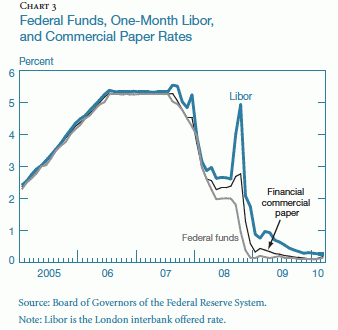(Article changed on September 20, 2012 at 21:39)
Recently, several court cases have examined the rating agencies' role in setting up the structured investment vehicles ("SIVs") that collapsed in late 2007. The rating agencies invoked their standard defense, which is that the Panic of 2007 was like a force of nature, a giant tsunami that wiped out all rational expectations of market performance. And consequently no evidence of their culpability may be found.
" As a threshold matter, there can be no serious dispute -- despite Plaintiffs astonishing attempt to ignore it -- that the global capital markets were gripped by a massive liquidity crisis in the summer of 2007," claimed the rating agencies' lawyers. " Plaintiffs [aggrieved investors] must plead facts sufficient, if proved, to exclude the credit crisis as an obvious non-fraud explanation for some discernable portion of their losses." (Given the evidence presented, it's hard to overstate the lawyers' chutzpah in that statement.)
Here the rating agencies are wagging the dog. There was a liquidity crisis. But it was triggered by the fatal flaws in $400 billion worth of SIVs, which were designed and overseen by the rating agencies. Because the totality of collapsing SIVs presented systemic risk, certain bank sponsors, most notably Citibank, were pressured to bail out the SIVs they had arranged. The consequential impact was to reduce bank capital and liquidity and to reduce overall confidence in the system.
SIVs are perhaps the most egregious example of how the rating agencies degraded the term "triple-A" beyond all meaning. The SIV implosion was also a the first act in an 18-month disaster, when investors and banks came to the creeping realization that hundreds of billions of dollars of fatally flawed triple-A bonds were going to get hammered.
An SIV is a bond portfolio financed in the commercial paper market. It makes money from a positive yield curve; short-term paper finances highly-rated long-term bonds.
The SIV business model was predicated on one simple idea: Blind faith in the triple-A ratings. Once that faith was questioned, once investors began to perform some rudimentary due diligence, they discovered why all SIVs were much riskier than all other forms of commercial paper. Beginning in August 2007, the SIVs could neither roll over their commercial paper, nor could they sell off their triple-A and double-A investments.
The rating agencies ascribe this failure to "the market," in which they played no role. But if you do a deep dive into a lot of these SIVs, you find a series of sham transactions dressed with empty formalities, which belied the obvious bad faith of those who put the deals together.
That's why a recent unanimous decision, Oddo v. Barclay's, by New York State's highest court, the Court of Appeals, was especially disheartening. It seemed as if none of the five justices really understood the business deal; their description of the financial transactions seemed devoid of context, disconnected from the real world. The issue of form versus substance often goes to the heart of the financial crisis.
SIVs, As Safe As Money In The Bank
Up until August 2007, when the $400 billion SIV market imploded, an SIV was considered to be an ultra-low risk proposition, along with all other commercial paper. Back then, commercial paper rates were virtually identical to the fed funds rate or to Libor. (Say what you will about Libor, the quoting banks are too big to fail.)
Time is money, and the reason why people put their blind faith in triple-A ratings was well known. No triple-A-rated bond ever defaulted, ever. Since 1920, before during and after the Great Depression, through wars, recessions and financial scandals, the one constant metric for safety was a triple-A rating.
Of course, there were a relative handful of triple-A companies that deteriorated over the years, were subsequently downgraded, and then defaulted. More than a quarter century after General Motors lost its triple-A rating, it entered bankruptcy. But after the Depression, the journey from triple-A to default was never shorter than four years, at least for Moody's. Using Moody's Expected Loss Table [See Appendix E], the expected loss for a triple-A bond over a two-year time span was 0.00001%. Put in dollar terms, the expected loss on a $300 million triple-A bond portfolio was $300.
Which was why SIVs paid close to the risk-free rate. It seemed unthinkable, 28 days after S&P had confirmed the triple-A ratings of two SIVs, Golden Key Ltd. and Mainsail II, that both of those of deals would default. Except that's exactly what happened. Amazingly enough, the New York Court of Appeals did not find this scenario to be highly suspicious.
It's the Rollover Risk, Stupid
(Note: You can view every article as one long page if you sign up as an Advocate Member, or higher).





